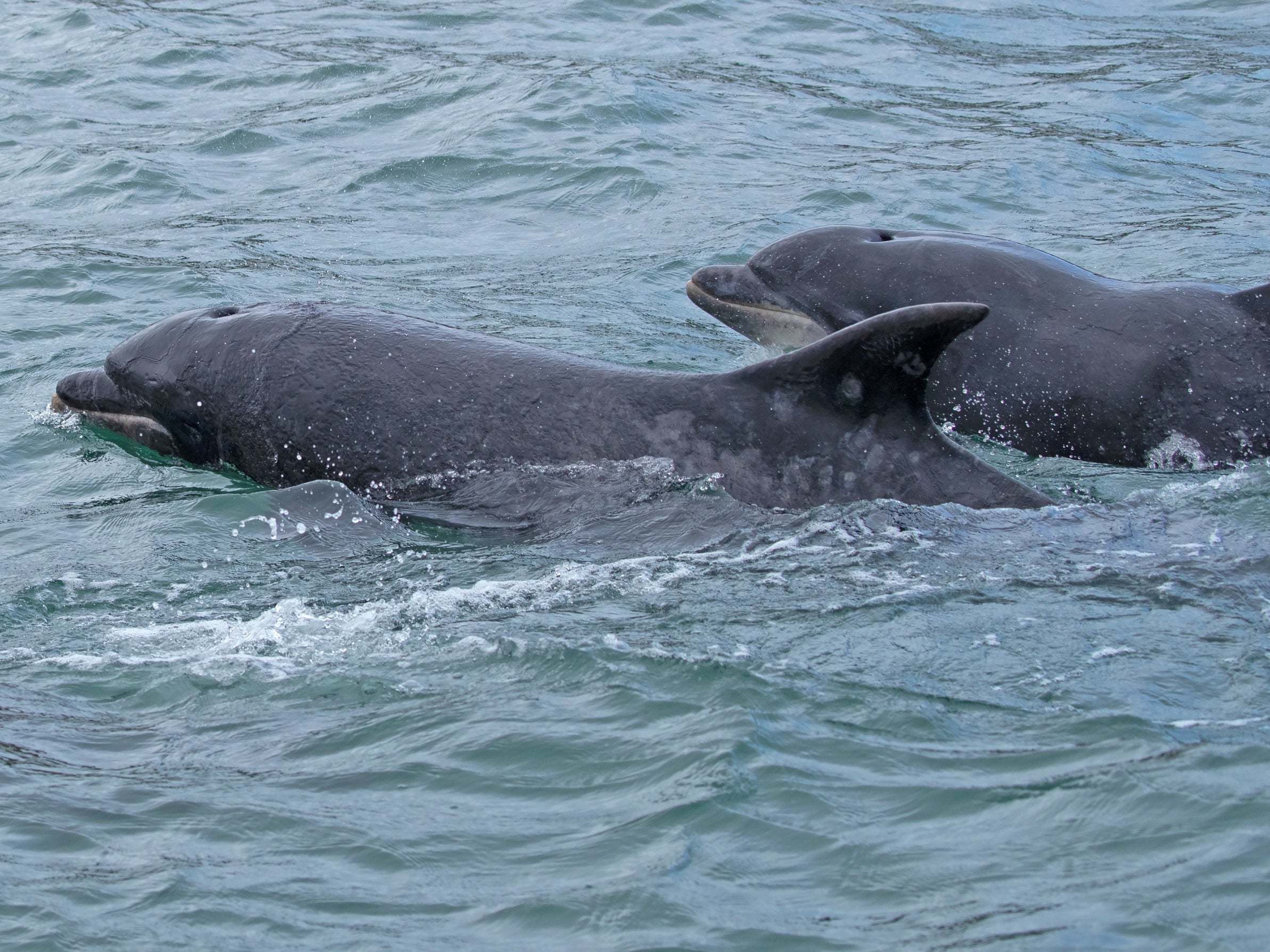Commuting seal and dolphins swimming farther south than ever, wildlife experts say
But more jet-skiers, kayakers, boat-trippers and drones are alarming dolphins and seals

Your support helps us to tell the story
From reproductive rights to climate change to Big Tech, The Independent is on the ground when the story is developing. Whether it's investigating the financials of Elon Musk's pro-Trump PAC or producing our latest documentary, 'The A Word', which shines a light on the American women fighting for reproductive rights, we know how important it is to parse out the facts from the messaging.
At such a critical moment in US history, we need reporters on the ground. Your donation allows us to keep sending journalists to speak to both sides of the story.
The Independent is trusted by Americans across the entire political spectrum. And unlike many other quality news outlets, we choose not to lock Americans out of our reporting and analysis with paywalls. We believe quality journalism should be available to everyone, paid for by those who can afford it.
Your support makes all the difference.Wildlife experts have celebrated “extraordinary” sightings of Scottish bottlenose dolphins off the Yorkshire coast – thought to be the farthest south that they have ever been spotted on the UK’s east coast.
They have also discovered a seal “commuting” between the Isle of Man and Cornwall to have pups and search for food.
But the discoveries – among the success stories for UK marine life in 2019 – were marred by finding that a greater number of jet skiers, kayakers and boat-trippers, as well as drones, were causing the marine mammals to panic.
Plastics, litter and discarded fishing gear are also devastating seabirds and mammals, a conservation group found.
Volunteers from the Wildlife Trusts recorded 320 sightings of minke whales, bottlenose dolphins and harbour porpoise off Yorkshire’s east coast in 2019.
It was the farthest south along Britain’s east coast that the dolphins from Scotland had been officially identified. Normally they are seen in the Moray Firth, off Cardigan Bay in Wales and the coasts of Cornwall, Northumberland and North Wales.
Bex Lynam, of the North Sea Wildlife Trusts, said: “It’s likely the bottlenose dolphins came south following shoals of fish; it’s thrilling to see playful dolphins and ocean giants like whales.
“Ten years ago, seeing a bottlenose dolphin off the Yorkshire coast would have been rare. We need to collect more data about how and why they are using these waters if we are to better protect them.”
For the first time, a seal was discovered commuting between the Isle of Man and Cornwall. Photographs show the animal, nicknamed Tulip Belle, has been a regular visitor to the southwest since 2001, returning to the Isle of Man every couple of years to give birth.
Lara Howe, of Manx Wildlife Trust, said: “This is a first for us. We had no idea that they would go as far as Cornwall.
“When I sent our Manx seal photos to the Cornwall seal group, it was a bit of a long shot and we were all surprised that we found a match. It shows that seals will swim great distances for food and a place to pup, highlighting the importance of a network of marine protected areas around the UK.”
Ms Lynam said warming seas from climate change meant species’ ranges were changing but in different ways.
Cumbria Wildlife Trust reported record numbers of grey seals at South Walney nature reserve: 483 including seven pups – up from 360 last year. Numbers have increased dramatically from only two in 1981.
But ocean litter also brought death and injury to wildlife in 2019.
Marine litter collected on Handa Island Wildlife Reserve, off Scotland’s far northwestern coast, was traced back to the US, Spain, Sweden, Ireland and Canada.
Last month hundreds of thousands of nurdles – tiny pieces of industrial plastic – washed up and covered parts of Kimmeridge Bay, Dorset. Nurdles, which are used in wastewater treatment, are eaten by birds and fish which mistake them for food.
Manx wildlife experts received several reports of seals tangled in plastic or rope.
Joan Edwards, the Wildlife Trusts’ director of living seas, said the year brought “a sea-change in people’s attitudes”.
“The extent of the nature and climate emergency is becoming increasingly clear, and more people than ever are volunteering to be citizen scientists and conducting important surveys or taking action to tackle the profound problems of marine litter and plastic pollution.”
In the past two years the highest numbers of dolphin disturbances have been reported to a hotline in Cornwall since monitoring began in 2013, with 16 dolphins alarmed by activities such as jet skiers.
Latest overall hotline figures – for 2018 – show 245 serious cases of marine wildlife being panicked, most of which were seals.
The trauma can separate parents from their young and disrupt feeding or breeding, say experts.
Join our commenting forum
Join thought-provoking conversations, follow other Independent readers and see their replies
Comments